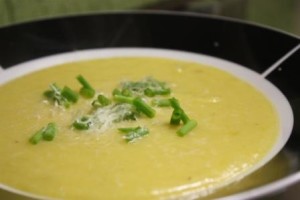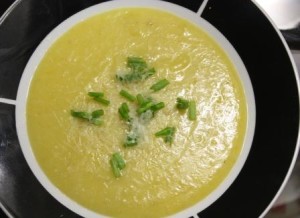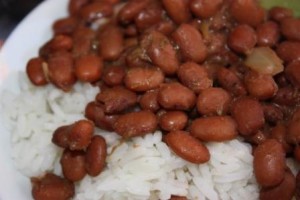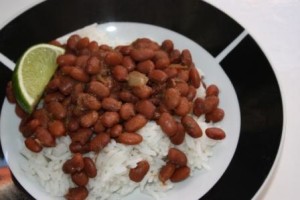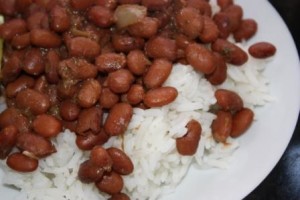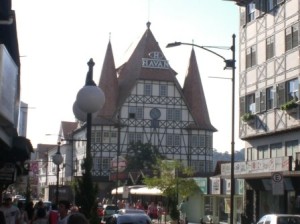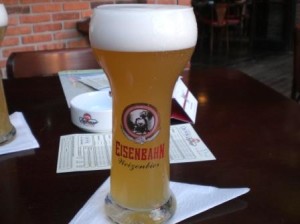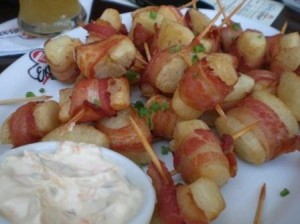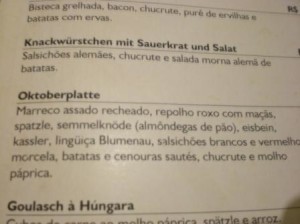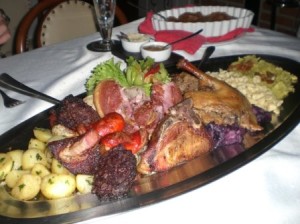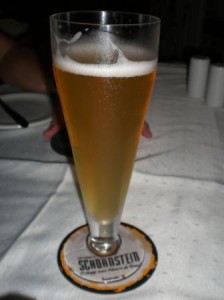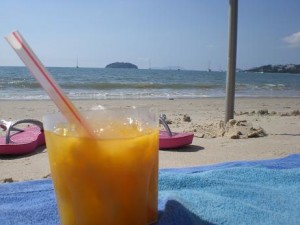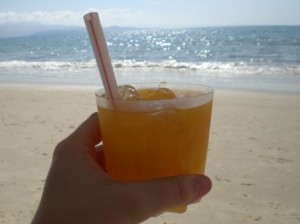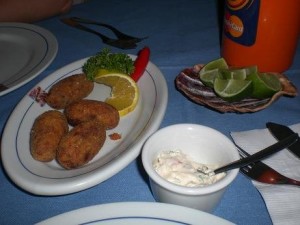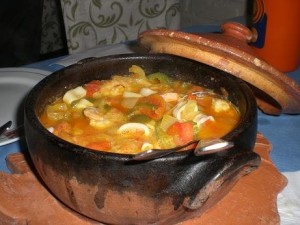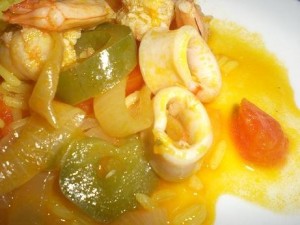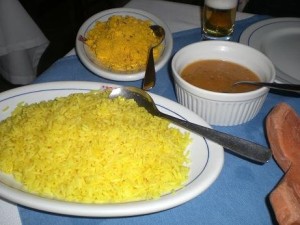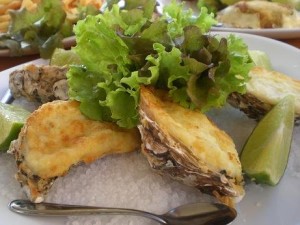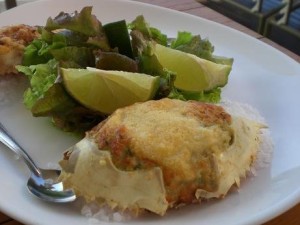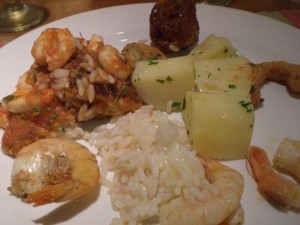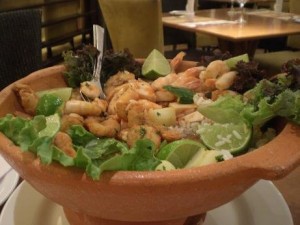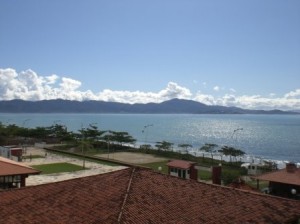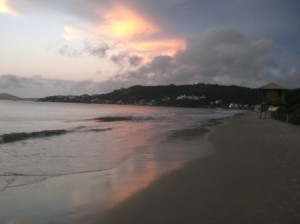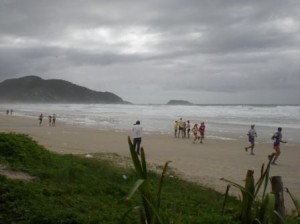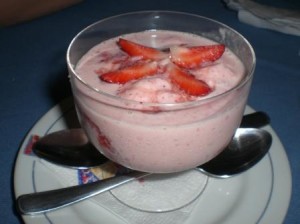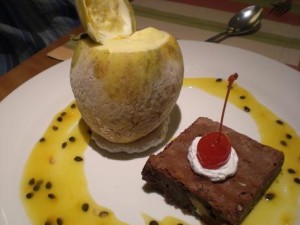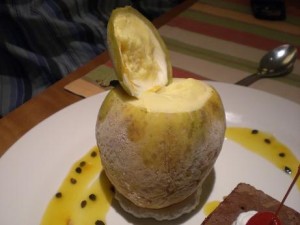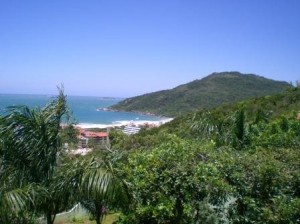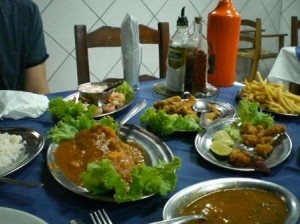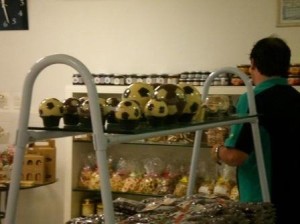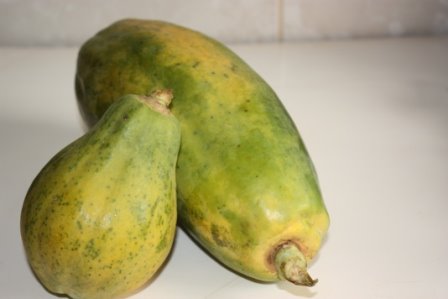
Most of us are pretty familiar with the papaya even if we don’t live in a place where they are regularly available. The papayas I had always been familiar with were about the size of a large white potato.
When I came to Brazil and started exploring all the fruits, I soon found papaya was widely available and very popular. It is the main component of salada de frutas (fruit salad) when you order it at a restaurant and I have yet to see a juice menu without it listed.
I found those small papayas I was familiar with right away in the supermarket. They are called papaya in Portuguese, too, but sometimes you will find it spelled papaia. Then I kept coming across this fruit that looked like an overgrown papaya and the signs always indicated it was mamão.
Here are pictures so you can see the size difference. The mamão is a huge fruit.
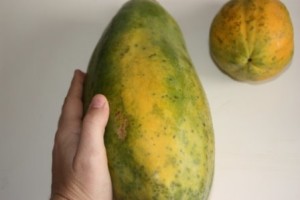

Upon purchasing one and trying it at home, I quickly realized it is really just a big papaya. I’ve asked around about the two fruits and that is pretty much what everyone here tells me as well. Although, the smaller papaya is supposed to be a bit sweeter. I can’t tell a flavor difference though. They look and taste exactly the same to me.
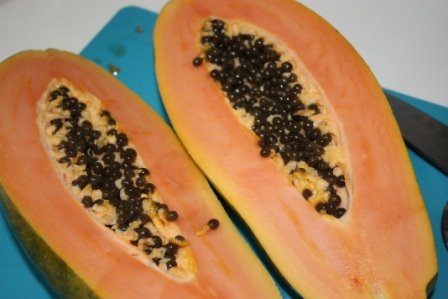
To tell you the truth, I’m not a huge fan of papaya. I enjoy it mixed in with other fruit in fruit salads and juices, but I don’t like the flavor enough to sit down to a big piece of it. Actually the most interesting thing about the fruit, the mamão specifically, is how it grows. I have been trying like crazy to get a photo because typically I only see them when we are driving. This is the best I have been able to do.
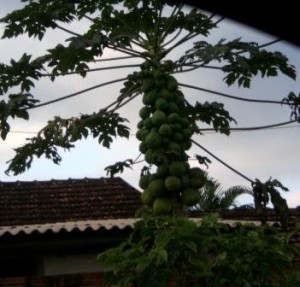
They grow on a tall, incredibly skinny tree that branches out with leaves at the top. The fruit grows in numerous bunches right at the top of the trunk.
Despite the fact that it isn’t my favorite, I do buy papaya or mamão every now and then. I consider it my duty to appreciate my access to all these good things and it usually goes into juice. However, the other day I was feeling a little creative.
I wanted to use the mamão, but wasn’t hungry for dessert. The thought of a bread entered my mind, and then, why not a breakfast cake. Who doesn’t want cake for breakfast?
This cake is full of whole grains and is hearty and filling. The papaya simply adds moisture as the flavor of the fruit itself isn’t very strong. I will say that it is very, very buttery. In fact, I think I’ll probably reduce the butter to a 1/3 cup the next time I make it. Because it is so moist, you’ll want to store any leftovers in the fridge.
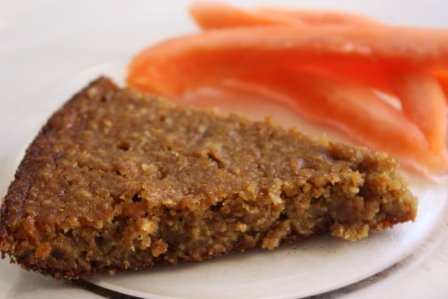
Papaya Breakfast Cake
Makes a 10 inch round cake
½ cup butter, softened
½ cup mascavo sugar (unrefined cane sugar)
2 eggs
1 cup papaya or mamão, pureed
¼ cup steel cut oats, soaked for at least a half hour and drained
½ cup whole wheat flour
1 tsp baking soda
½ tsp salt
Cream butter and sugar, then mix in eggs. Stir in papaya and mix well. Next stir in the soaked oats and stir until combined. Finally add in flour, baking soda and salt and stir to combine all ingredients.
I used a lightly greased 10 inch round, glass baking dish. However, given the amount of butter I think I could have gone without greasing it. Any square pan would work fine too. Bake at 375 degrees F for about 25 minutes, until edges are browned and center is baked through. Allow to cool about 5 minutes, serve warm or at room temperature.
Thanks for reading! All images and content are the property of Fake Food Free and Lori Rice unless otherwise stated. Please do not republish full recipes and images without written permission. What is okay? Feel free to Pin images, share links to my posts or share the photo in a round up post with the title of this recipe and a link back to the post. Confused about copyright and food blogs? Here is some helpful information on Recipe Attribution. If you want to use a photo or full recipe, just ask. I’m sure we can work something out.


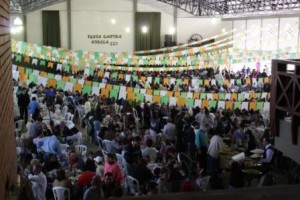
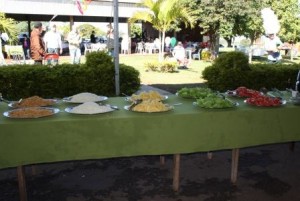
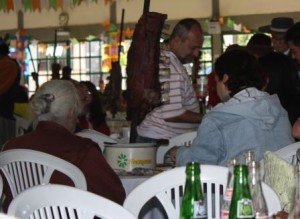
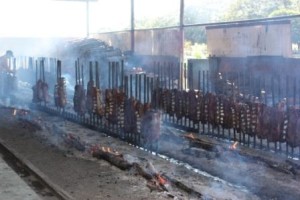
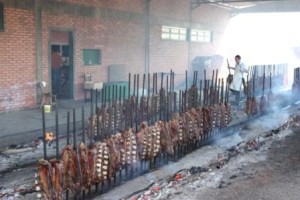
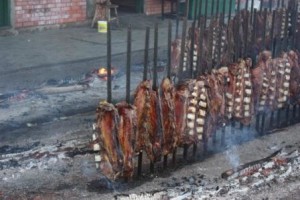
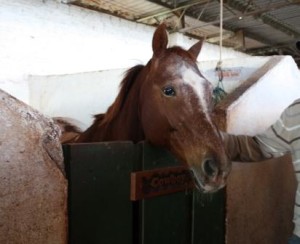 Hanna was my favorite; a sweet girl with her head out of the stall welcoming anyone who passed by to give her a scratch. I couldn’t help but laugh when two young boys walked up to give her hay and started calling her Hannah Montana. Apparently she is popular here too.
Hanna was my favorite; a sweet girl with her head out of the stall welcoming anyone who passed by to give her a scratch. I couldn’t help but laugh when two young boys walked up to give her hay and started calling her Hannah Montana. Apparently she is popular here too.
